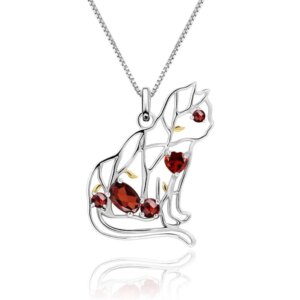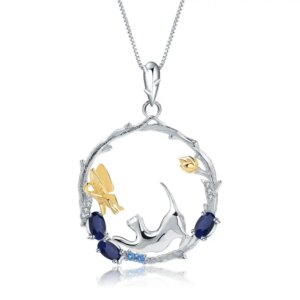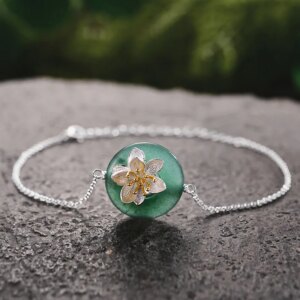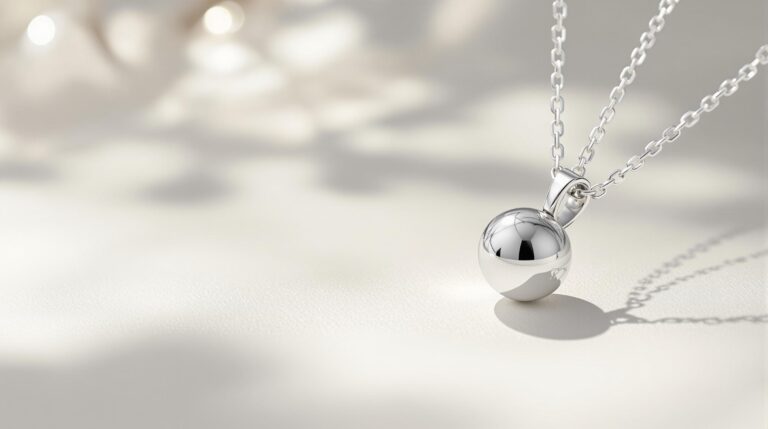Cat Karma Creations is passionate about all things cats, and understanding their unique vision is a key part of that. Cats are known for their exceptional vision, which plays a crucial role in their hunting abilities and overall behavior. In this article, we will explore the unique features of cat vision, including their night vision, color perception, and eye health. We will also compare cat vision with human and dog vision, and provide practical tips for maintaining your cat’s eye health. By the end of this article, you will have a deeper understanding of how your feline friend sees the world and how to keep their eyes healthy and happy.
The Unique Features of Cat Vision
Night Vision and the Tapetum Lucidum
Cats have an extraordinary ability to see in low-light conditions, thanks to a special layer in their eyes called the tapetum lucidum. This layer reflects light back through the retina, effectively doubling the amount of light the eye can use to form an image. This adaptation is crucial for cats, as it allows them to hunt and navigate in the dark. The tapetum lucidum is what gives cats their characteristic glowing eyes when light hits them in the dark. This feature not only enhances their night vision but also helps them detect even the slightest movements, making them highly effective nocturnal predators. If you have any questions or need more information, feel free to contact us.
Color Perception in Cats
While cats have exceptional night vision, their color perception is more limited compared to humans. Cats are believed to see primarily in shades of blue and green, with a reduced ability to perceive red and yellow. This is due to the types of photoreceptors, or cones, in their eyes. Humans have three types of cones, allowing us to see a full spectrum of colors, including red. Cats, on the other hand, have only two types of cones, which limits their color vision. However, this limitation does not significantly impact their overall visual capabilities, as their other visual attributes, such as night vision and peripheral vision, more than compensate for this drawback. For more detailed information, visit our Cat Themed Jewelry page.
Field of View and Depth Perception
Cats have a wider field of view compared to humans, which helps them detect movement and navigate their environment more effectively. A cat’s field of view is approximately 200 degrees, compared to a human’s 180 degrees. This wider field of view allows cats to be more aware of their surroundings, which is particularly useful for spotting potential threats or prey. Additionally, cats have excellent depth perception, which is crucial for their hunting and jumping abilities. Their eyes are positioned slightly forward on their heads, providing a good overlap of visual fields, which enhances their ability to judge distances accurately. This combination of a wide field of view and good depth perception makes cats highly skilled at both hunting and avoiding danger. Explore our All Jewelry collection for unique gifts inspired by feline beauty.
Common Eye Health Issues in Cats
Conjunctivitis and Its Symptoms
Conjunctivitis, or pink eye, is a common eye health issue in cats. It is an inflammation of the conjunctiva, the thin membrane that covers the white part of the eye and the inside of the eyelids. Symptoms of conjunctivitis in cats include redness, swelling, discharge, and tearing. Cats with conjunctivitis may also squint or rub their eyes frequently. This condition can be caused by a variety of factors, including infections, allergies, and irritants. Early diagnosis and treatment are crucial to prevent further complications. If you notice any of these symptoms in your cat, it is important to consult a veterinarian for proper diagnosis and treatment. For more tips on maintaining your cat’s health, follow us on Facebook.
Cataracts and Their Impact on Vision
Cataracts are another common eye health issue in cats. A cataract is a clouding of the lens in the eye, which can lead to decreased vision or even blindness. Cataracts can develop due to aging, genetic factors, or other health conditions, such as diabetes. Symptoms of cataracts in cats include a cloudy or milky appearance in the eye, reduced vision, and difficulty navigating familiar environments. If left untreated, cataracts can significantly impair a cat’s quality of life. Treatment options for cataracts in cats include surgery to remove the affected lens and replace it with an artificial one. Regular eye check-ups and early intervention are essential for managing and treating cataracts effectively. For more information on our charitable contributions, visit our website.
Glaucoma and Retinal Detachment
Glaucoma is a serious eye condition that occurs when the pressure inside the eye becomes abnormally high. This increased pressure can damage the optic nerve, leading to vision loss and even blindness. Symptoms of glaucoma in cats include redness, cloudiness, and bulging of the eye, as well as increased sensitivity to light and changes in behavior. Retinal detachment, another serious condition, occurs when the retina separates from the back of the eye. This can result in sudden and severe vision loss. Both glaucoma and retinal detachment require immediate veterinary attention to prevent permanent vision loss. Regular eye exams and prompt treatment are crucial for managing these conditions and preserving your cat’s vision. Connect with us on Instagram for more insights.
Comparing Cat Vision with Human and Dog Vision
Night Vision Capabilities
When it comes to night vision, cats have a clear advantage over humans and dogs. The presence of the tapetum lucidum in cats’ eyes allows them to see in very low-light conditions, which is essential for their hunting and survival. Humans, on the other hand, lack this layer and have poor night vision. Dogs have a moderate ability to see in the dark, with some breeds having better night vision than others. While dogs do not have the same level of night vision as cats, they still have better low-light vision compared to humans. This comparison highlights the unique adaptations that have evolved in different species to suit their specific needs and environments. For more unique cat-themed gifts, explore our Nature Inspired collection.
Color Perception Differences
In terms of color perception, there are significant differences between cats, humans, and dogs. Cats have a limited color perception, primarily seeing in shades of blue and green. This is due to the presence of only two types of cones in their eyes. Humans, with three types of cones, can see a full spectrum of colors, including red. Dogs, like cats, have limited color vision, primarily seeing in shades of blue and yellow. This difference in color perception is a result of the evolutionary adaptations of each species. While humans benefit from a wide range of color vision for various activities, cats and dogs have evolved to prioritize other visual attributes, such as night vision and motion detection. Discover more about our commitment to quality and unique designs by visiting our Sterling Silver collection.
Field of View and Depth Perception
The field of view and depth perception also vary among cats, humans, and dogs. Cats have a wider field of view of about 200 degrees, which is greater than the 180 degrees of humans and the 250 degrees of dogs. This wider field of view allows cats to detect movement and be more aware of their surroundings. In terms of depth perception, cats have good depth perception, which is crucial for their hunting and jumping abilities. Dogs, with their forward-facing eyes, also have excellent depth perception, which helps them track moving objects and navigate their environment. Humans, with a more balanced field of view and depth perception, have a versatile visual system that supports a wide range of activities and environments. For more tips and updates, follow us on Pinterest.
Practical Tips for Maintaining Cat Eye Health
Regular Eye Cleanings and Check-ups
Regular eye cleanings and check-ups are essential for maintaining your cat’s eye health. Use a clean, damp cloth to gently wipe away any debris or discharge from around your cat’s eyes. Avoid using harsh chemicals or irritants, as these can cause further irritation. Regular check-ups with a veterinarian are also important, especially if you notice any changes in your cat’s eyes or behavior. Early detection and treatment of eye issues can prevent more serious problems from developing. Your veterinarian can perform a comprehensive eye exam and provide specific recommendations for your cat’s eye care. For more information, visit our contact form.
Dietary Recommendations for Eye Health
A balanced diet is crucial for maintaining your cat’s overall health, including their eye health. Include foods rich in antioxidants, such as vitamins A, C, and E, which can help protect the eyes from damage. Omega-3 fatty acids, found in fish oil, are also beneficial for eye health and can help reduce inflammation. Consider adding these supplements to your cat’s diet, but always consult with your veterinarian before making any changes. A well-nourished cat is more likely to have healthy eyes and a clear vision. Explore our Stylish Cat Lover Necklaces for unique gifts.
Recognizing Early Signs of Eye Problems
Being able to recognize early signs of eye problems is crucial for maintaining your cat’s eye health. Common signs include redness, swelling, discharge, tearing, and changes in behavior or vision. If you notice any of these symptoms, it is important to consult a veterinarian as soon as possible. Early intervention can prevent more serious complications and ensure that your cat’s eyes remain healthy and functional. Regularly inspecting your cat’s eyes and staying alert to any changes can help you catch potential issues early and provide the necessary care. For more information, visit our Elegant Cat Brooch page.
Popular Quote
“The eyes are the window to the soul.” – William Shakespeare
Statistical Fact
According to the American Veterinary Medical Association, approximately 80% of cats will develop some form of eye disease by the age of 10. Regular eye check-ups and early intervention are crucial for maintaining your cat’s eye health and preventing serious conditions. (Source: American Veterinary Medical Association)
Three Tips for Maintaining Your Cat’s Eye Health
- Regular Eye Cleanings: Use a clean, damp cloth to gently wipe away any debris or discharge from around your cat’s eyes. Avoid using harsh chemicals or irritants.
- Healthy Diet: Include foods rich in antioxidants, such as vitamins A, C, and E, and omega-3 fatty acids to support your cat’s eye health. Consult your veterinarian before making any dietary changes.
- Early Detection: Regularly inspect your cat’s eyes and watch for any signs of redness, swelling, discharge, or changes in behavior. Early intervention can prevent more serious eye issues from developing.
Popular Questions About Cat Vision
- Can cats see in complete darkness? Cats cannot see in complete darkness, but their night vision is significantly better than humans due to the tapetum lucidum.
- Do cats see in color? Cats have limited color vision, primarily seeing in shades of blue and green. They lack the ability to see red and yellow as humans do.
- How can I tell if my cat has an eye problem? Common signs of eye problems in cats include redness, swelling, discharge, tearing, and changes in behavior or vision. If you notice any of these symptoms, consult a veterinarian.
- Can cataracts in cats be treated? Yes, cataracts in cats can be treated with surgery to remove the affected lens and replace it with an artificial one. Early diagnosis and treatment are crucial for the best outcomes.
Final Thoughts About Cat Vision
In conclusion, understanding the unique aspects of cat vision can help you better care for your feline companion. From their exceptional night vision to their limited color perception, cats have evolved to be skilled hunters and perceptive companions. By following the tips provided in this article, you can ensure your cat’s eyes remain healthy and their vision remains clear. If you have any concerns about your cat’s vision, don’t hesitate to consult a veterinarian. Visit our website to find excellent gifts for cat lovers and follow us on social media for more tips and updates. For more information, feel free to reach out to us at info@catkarmacreations.com or call us at (800) 343-1604.
| Feature | Cat Vision | Human Vision | Dog Vision |
|---|---|---|---|
| Night Vision | Excellent, enhanced by tapetum lucidum | Poor, lacks tapetum lucidum | Moderate, some breeds have better night vision |
| Color Perception | Limited, primarily blue and green | Full spectrum, including red | Limited, primarily blue and yellow |
| Field of View | 200° | 180° | 250° |
- Understanding the unique adaptations in a cat’s eyes that enhance their night vision
- Exploring the genetic factors that influence eye color in cats and how it affects their vision
- Identifying common eye health issues in cats and preventive care tips
- Comparing the visual capabilities of cats with those of humans and dogs
- Discussing the role of the tapetum lucidum in enhancing a cat’s low-light vision
- Exploring how a cat’s vision influences their behavior and hunting abilities















